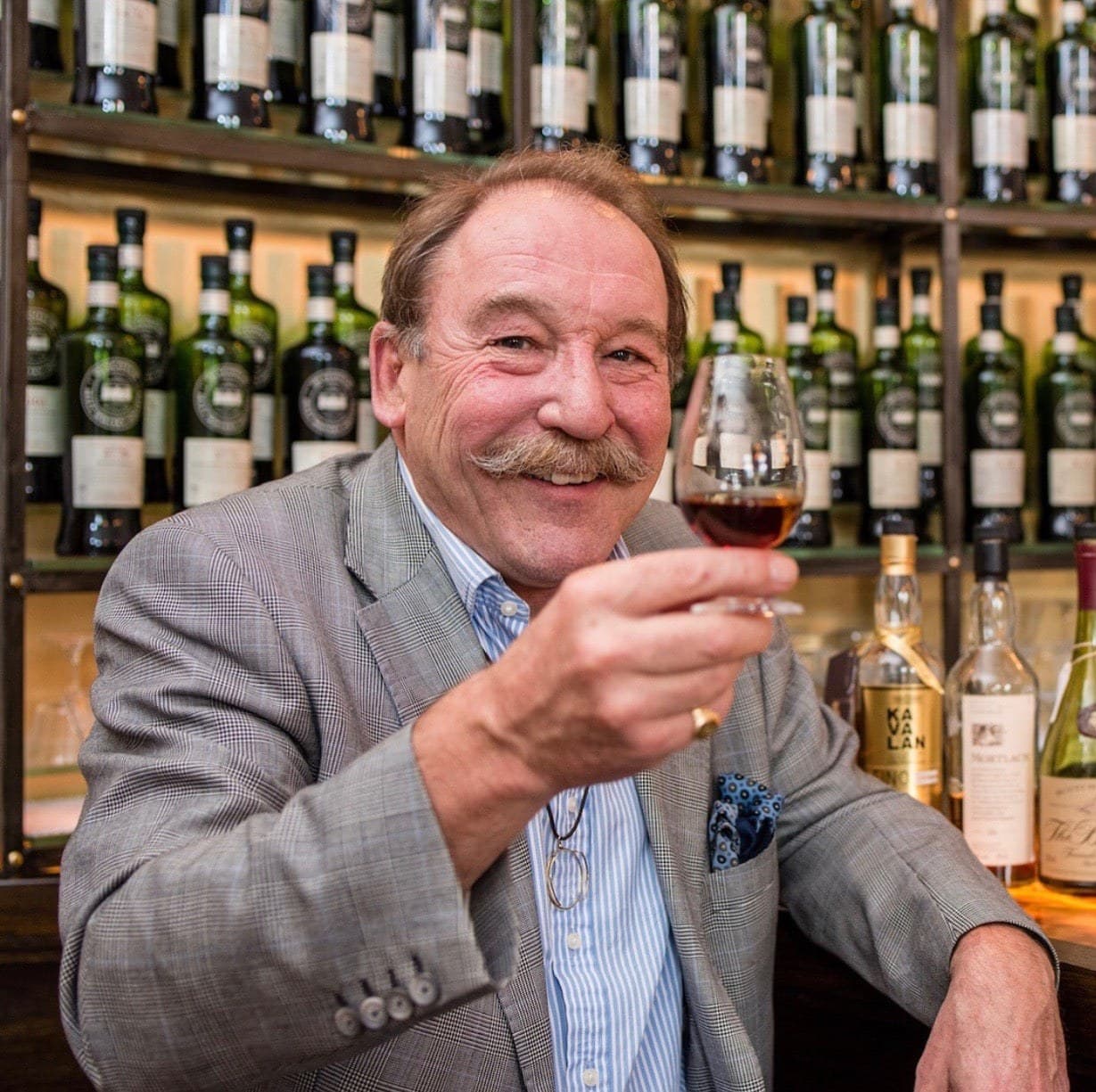Following the special release of four single cask whiskies hand-selected by world renowned writer Charlie MacLean, Charlie reflects on The Scotch Malt Whisky Society’s birth 35 years ago, its influence within the wider whisky world, and on his role as a chair of the Tasting Panel since 1992.
Charlie MacLean has been involved with The Scotch Malt Whisky Society since its early days at The Vaults in 1983, first as an enthusiastic member and then since 1992 as a chair of the Tasting Panel.
Sitting in his Edinburgh home, surrounded by whisky books and samples, Charlie reflects on the Society’s birth and its role in the wider Scotch whisky world.
“It was pioneering,” he says. “You have to remember that malt whisky was in its infancy at that time. Both The Macallan and Glenmorangie only began to promote their whiskies in 1981, which is staggering to think about now. And in that year, less than one per cent of Scotch whisky was bottled as a single malt – just one bottle in a hundred.
“At the same time there was a crisis, with the industry in complete disarray, sales plummeting and the closure of various distilleries. But against that backdrop, the Society played an important part in developing the trend – which was growing against all expectations – in the rise of single malt whisky.”
When Charlie first visited The Vaults in Leith, the Members’ Room as we know it now didn’t exist. But it was already a place for whisky lovers to meet and share a dram of single cask whisky, something previously unknown to them at that time.
“There was a wee dresser, in the corner, with various samples and an honesty box,” Charlie says. “You could go in and nose and taste and put your money in the box, and there would usually be other people there and they would say, ‘Wow try this one! Help yourself and put the money in the honesty box.’
“You have to remember that the concept of tasting single cask whisky, at full strength, un-chill filtered and at its natural colour, was a brand-new idea. Brand new! This produce wasn’t available until the Society came along.”
Charlie watched the Society grow from this small group gathering to share samples of single cask whisky at The Vaults to a larger and increasingly international club. At the same time, his whisky writing was developing to the point that, after completing a course in The Sensory Evaluation of Potable Spirits with Dr Jim Swan and Sheila Burtles at Pentlands Scotch Whisky Research [forerunner of the Scotch Whisky Research Institute] in 1992, he turned to writing full-time.
“That course changed my life,” Charlie says. “I had more or less finished my first whisky book, but after the training in sensory evaluation I had to go back and rewrite all my tasting notes!
“Shortly after that, the Society’s then-managing director Richard Gordon asked me to chair the SMWS Tasting Panel. The Panel’s Tasting Notes had always been provocative and exuberant, and my role was to encourage the Panel but rationalise its structure – don’t talk about taste until we have talked about the whisky’s appearance, that kind of thing.”
Charlie has been chairing the Tasting Panel regularly ever since, leading the process of sampling and approving those single cask whiskies deemed outstanding enough to make it into a Society bottle.
“You come across many casks that are okay, but not good enough for bottling as a single cask, single malt,” he says. “At the Society, we’re looking for samples of distinction – which means it may be an extraordinarily good example of the make, or it may be an unusual example of the make.
“Overall, we're looking for something that's both interesting and pleasant to drink, but ideally embodies the two key characteristics of mature character and distillery character.”
Charlie has also focussed on the language used in the Tasting Notes, combining subjectivity in terms of what panellists pick up from a whisky with specific descriptors that the majority of contributors agree are present in the sample.
“The SMWS was the first organisation to focus on flavour, and really invented a new language to talk about whisky,” he says. “The whole point of the Society’s single cask bottlings is in their variety, they can be so extraordinarily different, and the Tasting Notes need to reflect that.
“For example, the descriptor ‘fruity’ is very common, for Speyside whiskies in particular, but I try to get the Panel to narrow that down – are we talking dry fruit, fresh fruit, citric fruit, tinned fruit, cooked fruit - baked apples? That’s all part of the fun.
“But we’re not just plucking words out of the air – there was a great example when the Panel described an Islay whisky as being like ‘wetsuits and charcoal’. A member came into The Vaults and said our Tasting Notes were getting absurd. He produced a neoprene booty from his bag, and then we got a sample of this particular whisky. A random group of members nosed it, nosed the neoprene booty, then tasted the whisky, and it was exactly as described. So bingo!”
In terms of refining your own nose to the extent that you can pinpoint the aroma of neoprene booty in your next Society bottling, Charlie has one more piece of advice.
“People say to me, you must have the best job in the world, just drinking whisky, talking about it and writing about it. How do you get a job like that? I say practice, practice, practice.”



